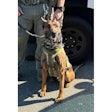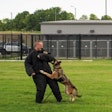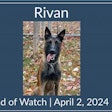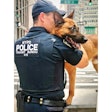Prosecuting the gang case starts with paying attention to the proper procedures.
You get dispatched to a possible gang shooting. When you arrive, the scene looks like it came straight out of' the movies. Family members are present and are hysterical. Several gang members are just milling around, and a lifeless body is on the sidewalk.
As primary responding officers, the first concern is aiding the surviving victim(s). Next is getting a statement from the victim, if possible, and finding witnesses. At the same time, officers have to secure the crime scene and start the investigation.
These cases are difficult for many reasons. As cops, we want the bad guys in prison, but as we all know by now, there is a formula that must be followed to keep them there.
A gang investigation starts with going back to the basics. The primary investigation is usually done by the responding patrol personnel. Initial contact with the witnesses and surviving victim(s) is made, the crime scene is contained and the immediate apprehension of the suspect(s) is attempted.
Responding personnel should be prepared to deal with a variety of situations when approaching a gang-related shooting. The scene may be a major incident that demands a large law enforcement response or it may require the recovery of a body with no one around.
As the shooting goes down, the victim gang is likely to be armed and will probably fire back. If you find two or three types of casings at the scene, don't assume the attacking gang fired all the rounds. It is common for the victim gang to shoot back, and you may have both suspect and victim gang bullet casings at the crime scene.
If your victim survives the shooting and is transported to the hospital, send two officers with him or her if possible. Shooting scenes can be very emotional, and the surviving family and fellow gang members are often angry. If the victim dies, their anger is sometimes directed at the officer at the hospital or hospital personnel.
In Los Angeles, emergency room nurses have reported incidents in which the rival gang attempted to finish things off at the hospital.
Seeking Out Witnesses
If appropriate, try to get a recorded statement from the victim. It often turns out to be a dying declaration. Be truthful to the victim about his or her condition.
In some jurisdictions, gang/homicide investigators are called to take over the investigation. However, the initial investigation and contact of witnesses should continue by the primary responding officer. Complete descriptions of the witnesses are always needed. Recently, preparing a 1991 gang homicide case for trial proved challenging. Initially, there were four defendants. One won his case on appeal, and the case wound up back on the docket.
At the time of the shooting, there was one eyewitness besides the involved parties. The eyewitness was a well-known fellow gang member. When the investigation was completed, the witness's age and street name were recorded on the police reports. All the local cops at the time knew where this guy lived and hung out. The problem is that most of those law enforcers have since retired, transferred or quit, and somebody has to try to find him with just an age and possible address, making the case more difficult to prosecute.
Getting Basic Information
Go back to the basics, even if you personally know the witness. Collect all the identifiers, including date of birth, complete name, driver's license number, social security number, home telephone number, work address and telephone number. If you think the witness might move, get the complete names, addresses and telephone numbers of parents and siblings. If there is a language barrier, don't be afraid to ask the witness to write it down for you.
The follow-up investigators and the prosecuting attorney will appreciate your efforts. Subpoenas are issued and often mailed directly to the witnesses: therefore, proper zip codes are needed. If they are not on the initial report, someone else will have to find them.
Full names are used to properly identify suspects and witnesses. Just look in the phone book and see how many times Gonzales, Nguyen and Smith show up. The bottom line is that recording all the right information properly helps follow-up investigators and prosecutors. You know by now that many of these cases do not go to trial for a year or two, even if an arrest is made quickly.
Some victims and eyewitnesses are truly in the wrong place at the wrong time. These are normally non-gang member victims and witnesses, and they can be just as uncooperative and unwilling to testify as gang members. Their primary fear is usually gang retaliation.
The gang reputation has instilled fear and apprehension in the general population. And it hasn't helped that the public has been exposed to recent criminal trials in which the actions of follow-up forensic and police investigators have been criticized and questioned.
Recording the Interview
When interviewing a potential suspect, record the session by video or audiotape. The recording can show that the proper Miranda warning was given, that no threats or promises were ever made to the suspect and that no physical harm befell the suspect.
Secondly, it locks the suspect into his or her story. It would be difficult for someone to take the stand and recount a different version of the facts if the prosecutor has a taped interview that can be used to impeach the defendant. Imagine the impact on a jury when the defendant says on a recorded interview that he wasn't at the crime scene and you have evidence to prove he was.
Recording the interview is just as important when talking to witnesses or victims. This compels them to recount the same facts throughout the judicial proceedings. And the recording becomes crucial if your eyewitness suddenly forgets the incident while testifying. Prosecutors have used prior recorded statements to impeach uncooperative prosecution witnesses.
The tape recordings can also be transcribed to help the prosecutor prepare for the criminal trial and may become part of the discoverable information the defense attorney requests. Depending on the prosecutor, the transcriptions may also be used to help refresh the memory of the witnesses, especially if the case doesn't go to trial for a year or more.
Recorded interviews also show the jury that a professional job was done by the law enforcement personnel and can also enhance the image of the law enforcement witness. With the increased criticism of law enforcement by the media, it is even more important to conduct professional and thorough investigations.
As members of the law enforcement community, it is part of our job to testify as witnesses in court. If you are called to court, be prepared. Before your court date, study your reports thoroughly. If possible, discuss the realm of your testimony with the prosecutor and find out if you will be testifying as an expert witness. Be as accurate as possible and polite to the defense attorney during cross examination.
If you're going to testify as a gang expeI1, keep your resume up-to-date. A copy you provide to the prosecutor will often be shared with the defense attorney(s), and, on occasion, they may stipulate that you should be considered an "'expert"' for the hearing you are about to testify in. This means that you won't have to go through a preliminary examination by the court to determine your competency as an expert witness, and you'll be able to get right into the gang issues of the case.
Protecting the Witness
Witness intimidation is always a possibility in a gang case. Do not get lulled into a false sense of safety just because you haven't had to deal with it before. It's a good idea to keep in contact with all the witnesses.
This liaison will keep the communication channels open and help keep witnesses cooperative. It can be a time consuming practice but its well worth it. You will always know where your witnesses are, and at trial time you'll never have to tell the prosecutor that you can't find a particular witness.
Witness liaison is simply keeping the people informed of the case status and assisting them in getting to court. It is also important to keep track of any intimidating telephone calls, in person contacts or written correspondence they may have received. And all incidents of witness intimidation by gang members should be reported and documented immediately. Also notify the prosecutor who is handling the case.
The safety of the witness is of primary importance. A threat analysis should be made, and you should be prepared to assist the witness and family members in finding temporary housing in extreme cases. Once notified, law enforcers have the professional and ethical responsibility to thoroughly investigate these cases. Reported incidents of witness intimidation that go undocumented and uninvestigated can result in civil liability.
When investigating gang violence, follow the right formula and be safe.
Al Valdez is an investigator with the Orange County District Attorney and the author of the book, Gangs.












